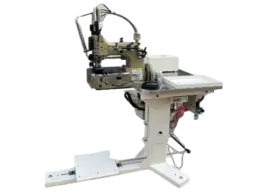Understanding the Function and Benefits of an Overlocker in Sewing
What is an Overlocker in Sewing?
An overlocker, also known as a serger, is a specialized sewing machine designed to finish the edges of fabric, preventing fraying and producing a professional-looking seam. It is an essential tool for both amateur and professional sewists, providing capabilities that a standard sewing machine cannot. In this article, we will explore what an overlocker is, how it works, its various uses, and the advantages it brings to sewing projects.
Understanding Overlocking
The term overlock refers to the method of sewing used by this machine. Overlockers typically use multiple threads—usually from three to five—to create a seam that wraps around the raw edges of the fabric. This not only secures the edges but also adds stretch, making it especially valuable for knit fabrics.
Unlike a regular sewing machine, which only has one needle and does not prevent fraying at the edges, an overlocker cuts the fabric as it sews, allowing for a clean finish. The unique design allows for very quick sewing, making it a favorite among those who sew garments, especially in commercial settings where efficiency is key.
How an Overlocker Works
At the heart of an overlocker’s operation are its loopers and blades. The machine typically has two loopers—upper and lower—that hold the threads, and a needle that stitches the fabric. The upper looper threads the fabric from above, while the lower looper threads it from below, intertwining the threads to create a secure stitch.
When you guide the fabric through the overlocker, the built-in blade trims the fabric's edge as it sews. This provides a finished look without requiring additional steps, differentiating it from traditional sewing methods. Many overlockers also offer adjustable settings for stitch width, length, and tension, allowing for customization based on the fabric type and desired finish.
Common Uses of Overlockers
Overlockers are incredibly versatile and can be used for a variety of sewing tasks
1. Finishing Seams The primary function is to finish seams neatly, preventing fabric from fraying. This is especially important for woven fabrics.
2. Sewing Knits Since overlockers create a stitch that stretches with the fabric, they are ideal for sewing knit projects such as t-shirts, leggings, and swimwear.
what is an overlocker in sewing

4. Attaching Lace or Trimming Overlockers can also be used to attach lace and edging to a garment while finishing the edges simultaneously.
5. Quilting and Crafting While they are not typically used for quilting, some sewists use overlockers when preparing raw edges of quilt blocks.
Advantages of Using an Overlocker
1. Speed Overlockers can sew faster than traditional sewing machines, making them indispensable when working on large quantities of items.
2. Professional Finish The ability to create a clean, finished seam gives garments a polished look, similar to those produced in retail.
3. Versatility With multiple settings, overlockers can handle various fabric types and sewing techniques, adapting to different projects seamlessly.
4. Reduced Fraying By cutting and finishing seams in one step, the overlocker significantly reduces the risk of fabric fraying over time.
5. Easy Maintenance Overlockers are generally straightforward to clean and maintain, ensuring longevity and consistent performance.
Conclusion
An overlocker is a valuable investment for anyone serious about sewing, be it a hobbyist or a professional. Its ability to provide a clean finish, combined with its speed and versatility, makes it a must-have tool in the sewing room. Whether you are working with delicate fabrics or creating everyday garments, an overlocker enhances your sewing experience and improves the overall quality of your projects. By understanding its functionality and applications, sewists can fully leverage the advantages this powerful machine has to offer.
-
Leather Sewing Machine: The Industrial Standard for Tough MaterialsNewsJul.18,2025
-
Sail Making Machine: Heavy-Duty Stitching for Industrial and Marine NeedsNewsJul.18,2025
-
Sling Sewing Machine: The Backbone of Heavy-Duty FabricationNewsJul.18,2025
-
Leather Sewing Machine: Precision for Heavy-Duty StitchingNewsJul.18,2025
-
Big Bag Sewing Machine: Powering the Future of Bulk PackagingNewsJul.18,2025
-
FIBC Sewing Machine: Essential Equipment for Bulk Bag ProductionNewsJul.18,2025
-
Heavy Duty Leather Sewing Machine: A Must-Have for Professional LeatherworkNewsMay.28,2025





























